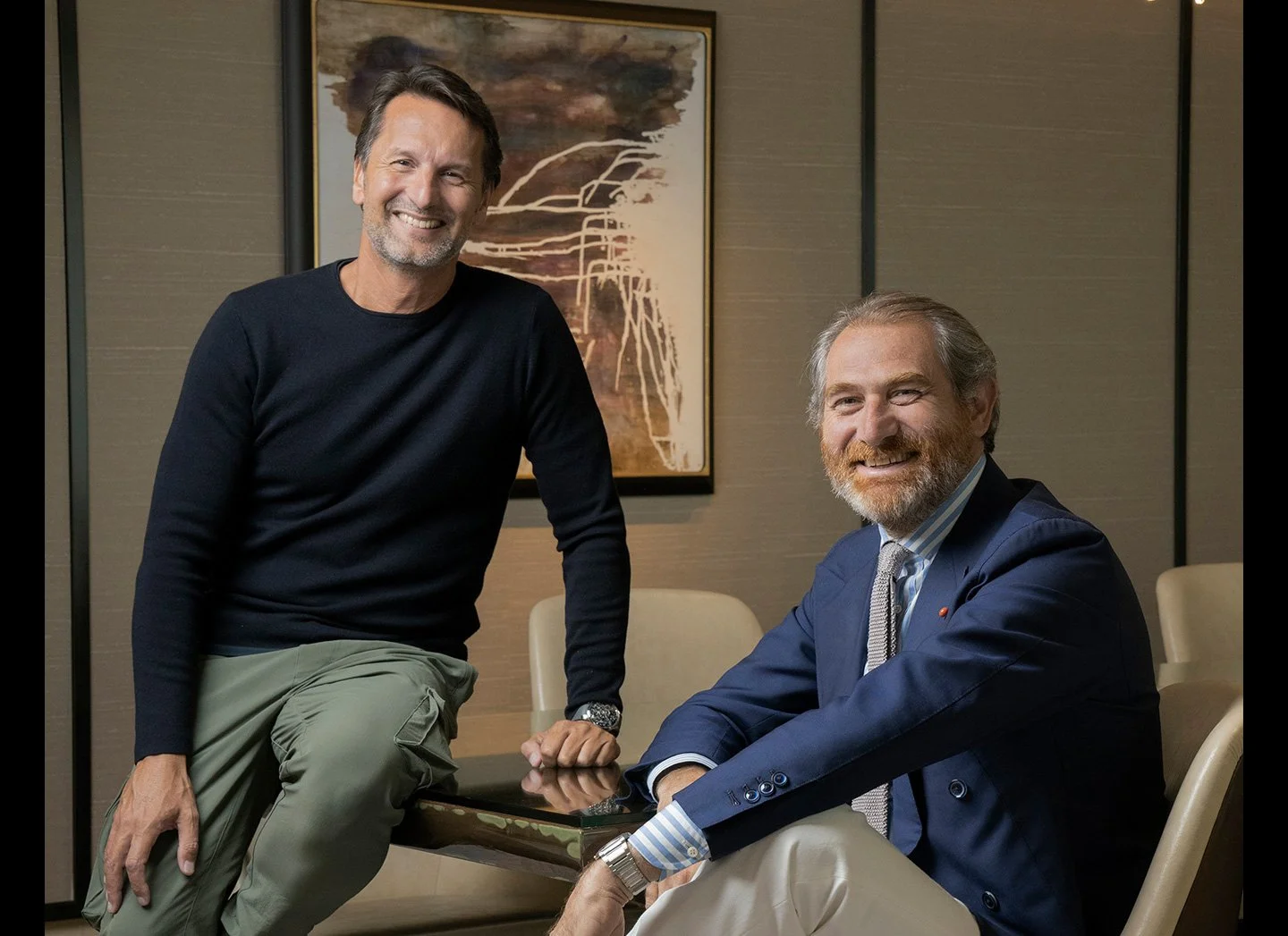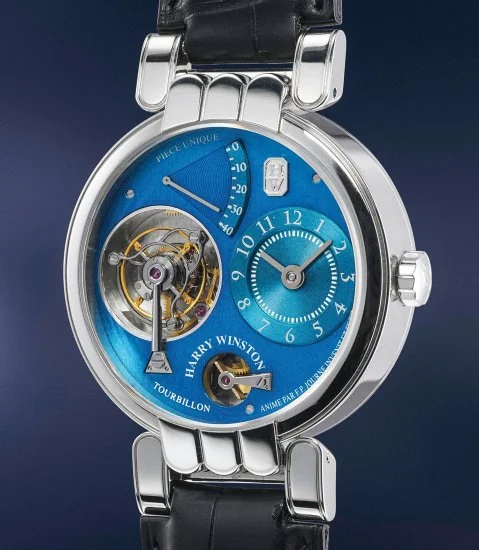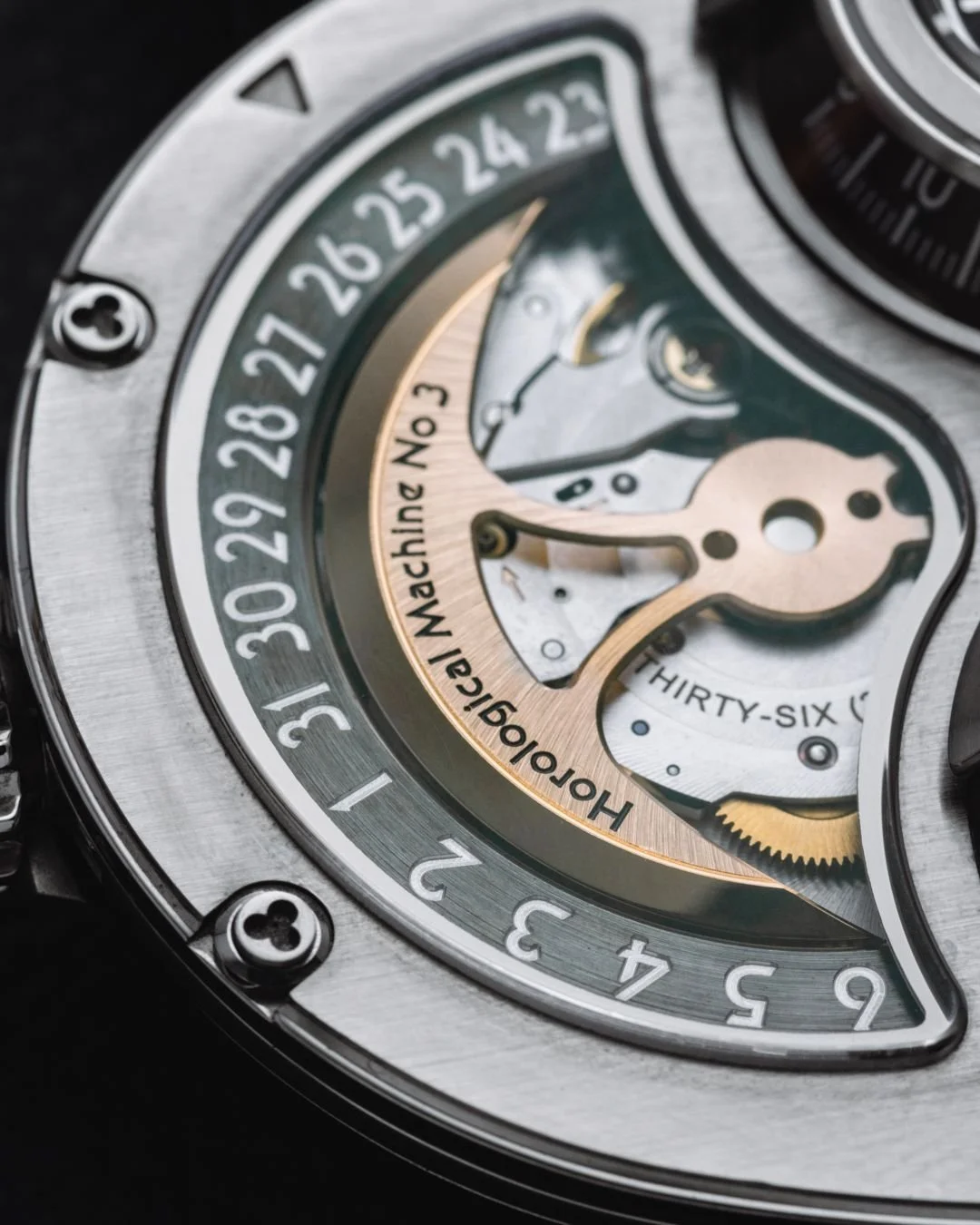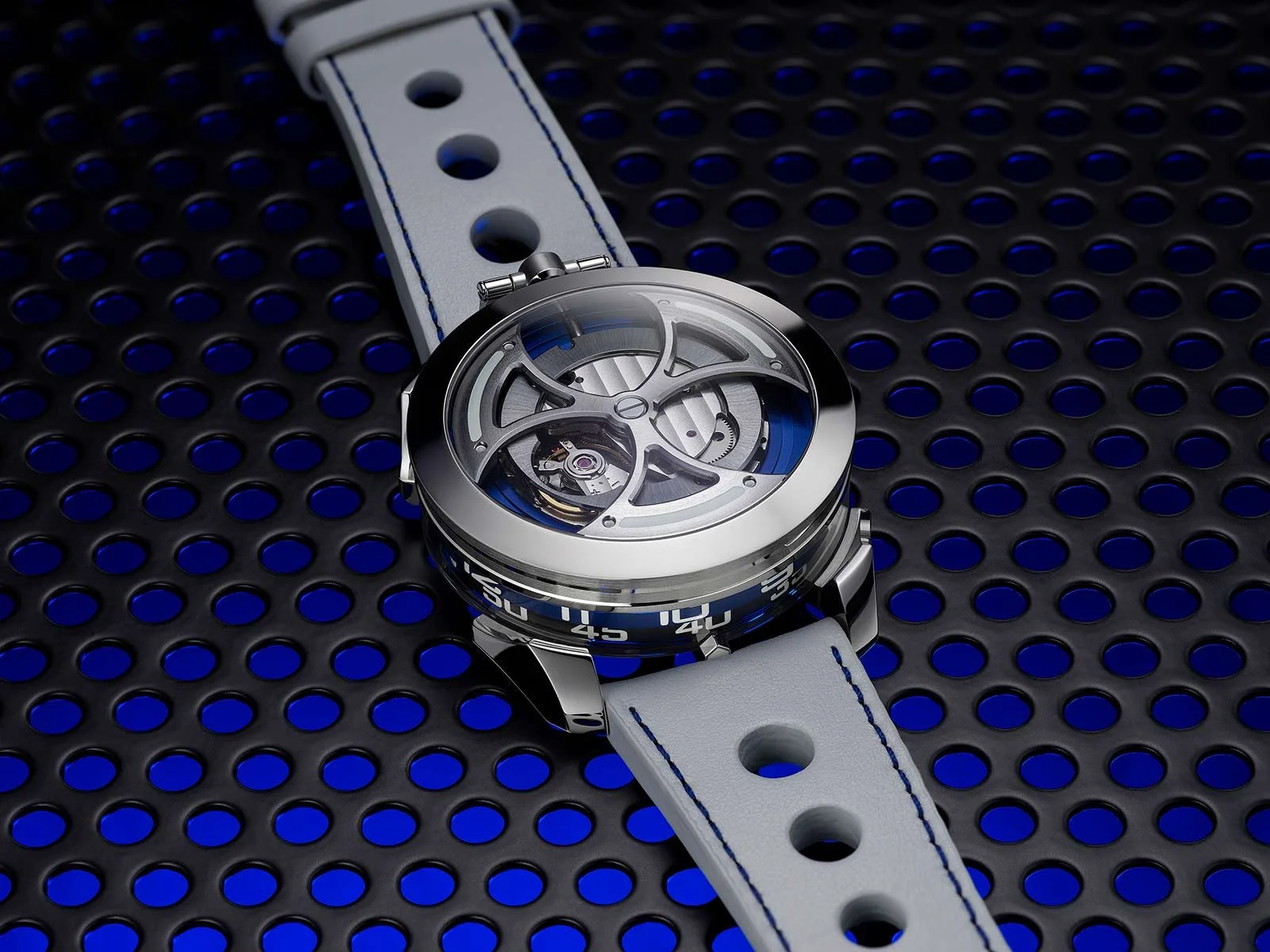Max Büsser and the Creative Process
We can remember the exact feeling we felt when we saw one of MB&F’s creations. It’s a feeling somewhere between shock and intrigue. You instinctively want to roll through the Five W’s – who, what, where, when, and why – to bridge the large gap between what your eyes see and what your mind understands. That’s a testament to the brand’s creativity. It simply fascinates, even those who don’t have any interest in horology.
HM3 Sidewinder - Credit: Esperluxe
It’s one thing to produce something that has this affect on someone one time, or even a few times. In the case of MB&F, “Max Büsser and Friends” have beat the drums of creativity across 13 Horological Machines, 9 Legacy Machines, and a slew of other marvelous co-creations with fellow brands like H. Moser & Cie and Bvlgari. It’s been a marathon of creative output over the last 16 years since the inception of the company in 2005. The craziest part in all of this, it appears that Max and the team are hitting their stride better and better as each year passes. The question is: how? How does Max and MB&F consistently churn out creative ideas? What’s the creative process like? Where does the creative drive come from?
Maximilian Büsser and Fabrizio Buonamassa Stigliani of Bvlgari
Fortunately, we were able to connect with Max recently to discuss these questions.
Where it always begins: exposure to new ideas
Is creativity something learned, or does a person simply have “it”? In the case of Max, he paints a picture of his own creative awakening in adulthood through his exposure to other creative individuals. During his time at Harry Winston, he led the development of the Opus Collection – a canvas for young, creative watchmakers to express their most innovative ideas. The earliest Opus timepieces were created by the likes of F.P. Journe, Vianney Halter, and Felix Baumgartner to name a few. Legendary modern watchmakers now, each was only beginning their careers as independents.
Harry Winston and F.P. Journe Ref. 200/MTFPJ38P Credit: Philips
Interacting with these “indie” creators, Max learned a massive amount about teamwork, collaboration, and watchmaking. One thing particularly stood out though, as he mentioned.
F.P. Journe, Vianney Halter, and Felix Baumgartner were each chasing their own ideas. The end consumer (probably a collector who commissioned the timepiece) is a part of the picture, sure. But many of these watchmakers would probably be building and tinkering with the same ideas as a hobby, all commercial prospects aside. “I worked at JLC and Harry Winston, and at both companies, we are fighting for survival. We were trying to make products consumers would love. I didn’t realize that watchmakers could create timepieces for themselves, without really any regard for the market.”
This blew the doors off of Max’s entire perspective on business in the watchmaking industry. We know, it’s truly impossible to reduce anything to one cause, such is always an oversimplification of reality. So we won’t say that Max’s exposure to “independent-minded” watchmakers was the spark for years and years of creativity to come. It did get the ball rolling though.
Creativity by any means necessary
Exposed to creative minds in the watch industry at Harry Winston, Max’s approach to unlocking his own creativity has evolved over the years. In the early days of the brand, he would sketch. “Your mind and hand roams quite freely when sketching,” he said. “ It allows you to play with visual ideas really well.”
As time progressed though, he developed the routine of sitting alone. A major part of the creativity behind MB&F comes from this solitary time. This is time Max spends in his garden for one hour, each week, without his phone or any other device. As he mentioned, “one hour, alone, without anything is a lot of time. Very few people really commit to exclusively thinking for a period of time.” It’s clear that his ability to visually think has evolved immensely since the brand’s inception since he doesn’t often require a pen and pad anymore. He brings abstract ideas into semi-concrete form before discussing them with others. As a great anecdote, the most recent MAD 1 timepiece for “friends and family” came about – that creative click of a moment – while in an acupuncture session. Briefly mentioned, he also said that an upcoming MB&F timepiece was inspired by an epiphany he had from a film he watched while in an airplane.
“Friends” of Max Büsser
It’s not all solitary though. Some of MB&F’s most iconic markers, namely the battle axe rotor, were developed through internal, creative competition. For one Horological Machine, Max and Eric Giroud, veteran watch designer and collaborator on MB&F timepieces, set a 7-day deadline to create an idea for the brand’s to-be rotor. The battle axe, as we know it, was Max’s idea, beating out what he described as a “more technical” rotor that Giroud brainstormed. With his team, this approach to solving engineering and design challenges is still routinely used – battle of the fittest in creative terms.
Battle Axe Rotor of MB&F HM3 Credit: EsperLuxe
“Creativity can work well as a communal process, but creative direction isn’t run as a commune. It can be very dictatorial – hopefully always in a benevolent way! But the final decision always comes back to me,” said Max. Between solitary time, team brainstorming, and competitions for creative ideas, it’s clear from conversation that Max and “friends” are willing to do whatever it takes to strike the right idea and run with it.
Creativity is constantly pushing
In philosophy, Nietzsche used to discuss the rivaling tendencies in Ancient Greek culture - the Apollonian and Dionysian. The former represents the rational, harmonious, and well ordered in society, while the latter is driven by passion, chaos, the breaking down of barriers. One fights to maintain the existing order while the other strives to build new.
Put the specifics of Ancient Greek (and modern) culture aside, and you can see the Nietzschean model of these contradicting tendencies play itself out in the microcosm of MB&F. The Horological Machines (the Dionysian) and the Legacy Machines (the Apollonian) represent the tension between free-thinking and tradition, destruction of boundaries and the maintenance of established order. Max, as he mentioned, is very much aware of these contradictions in his creativity and interests.
The HM10 Bulldog Credit: MB&F
“The schizophrenia is not involuntary – it is about getting out of our comfort zone, about opening doors to new challenges.” After years of Horological Machines, the pendulum swung and thinking along “Apollonian” lines was a change in gears that Max wanted and needed. Here, we have a major part of Max’s approach to creativity – whatever “great” creativity is, it happens when you seek discomfort and push boundaries.
Knowing this now, it makes it easier to think of MB&F’s collection as a whole – all of their timepieces, co-creators, miscellaneous projects, and of course, the MAD Galleries. If you’re looking to find a single thread that runs through everything, there’s a good case to be made that it is Max’s pursuit of discomfort and challenges. Whether it’s engineering and manufacturing challenges, challenges in designing visual forms, challenges in managing galleries, or most recently, producing an affordable creation in the MAD1. Max and friends are laser-focused on pushing through barriers put up by horological tradition, engineering feasibility, and the limits of their own imaginations.
;MAD1 Credit MB&F
… creativity is hard to define ...
Before we spoke to Max, we were hoping to pull together some concise definition of his approach to creativity. The truth is, our conversation opened up more questions about creativity than it provided answers. There are a few things we were able to take away though.
The first, creativity at MB&F is about much more than “creating a novelty.” Based on his exposure to independent watchmakers at Harry Winston, it definitely doesn’t have to do with “creating value” in commercial terms either. Any novelty or value might be the end result of creativity, but that’s not where creativity is actively happening.
The second thing has to do with something Paul Cézanne remarked upon. As one of the important innovators in the history of painting, he was asked how he does what he does so masterfully? His response, “my method is to love working.” With Max, it appears that any grasp on creativity at MB&F cannot be separated from his passion for the team’s creations. Anyone who has ever spoken with him or heard him speak knows that he really is about that life. There’s no other way to say it. This is what really makes MB&F special – the watches, clocks, and other mechanical artwork are driven by a very fundamental joy. And it’s that joy that keeps us anxiously awaiting what’s next.
**Special thanks to Max Büsser for his time and to Mike Ortolano for the research and writing.








